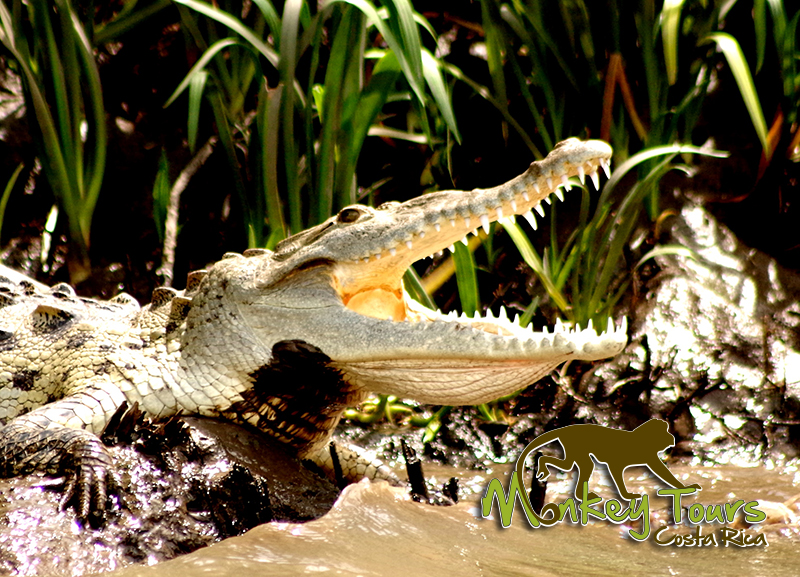The American Crocodile of Costa Rica
The American Crocodile poses as an intimidating figure that many fear and respect, and some truly fearless folks in Costa Rica have placed themselves at the jowls of the beast.
Distribution
The American Crocodile is located from southern Florida through the Caribbean and Central America into the northern regions of South America. It inhabits mangrove swamps, brackish lakes, lagoons, small islands, river inlets and estuaries. Some of the national parks in Costa Rica where the American Alligator is found include Tortuguero National Park, Santa Rosa National Park, Cahuita National Park, Piedras Blancas National Park and Carara National Park.
Mating & Reproduction
American Crocodiles breed from January to February, but some begin earlier from October to December. Males begin seeking a female by calling in very low growls, and pick their mate based on her size. Females that have attained nearly 3 meters in length are considered sexually mature.
After copulation, females will gestate for around two to three months before laying her eggs in a nest built on the river banks or a sandy beach. She then guards her clutch of 35-50 eggs for another two to three months before they hatch.
Young Crocs feast more prominently on insects and small fish, because at their birth they are only as big as 300 mm. They usually hatch and begin looking for food automatically.
Behavior
As adults, the American Crocodile consumes small mammals, frogs, birds, snails, fish, lizards, crabs and shrimp. They are opportunistic hunters, and will take anything that they can. They have rarely been observed attacking humans in contrast to the reputation of Nile and Saltwater Crocs. Adult American Crocs are considered apex predators, but some are preyed upon by jaguars, humans and large sharks.
Miscellaneous Info
A man named Gilberto Shedden, AKA Chito, had a long relationship with a crocodile named Pocho after he rescued it from the Revantazón River banks. The pair became world famous for their performances in Siquirres, Costa Rica.
Where to see it in Costa Rica: Tortuguero National Park, Corcovado National Park, Santa Rosa National Park, Cahuita National Park, Piedras Blancas National Park, Carara National Park
Diet: small mammals, frogs, birds, snails, fish, lizards, crabs, shrimp
Migration Pattern: non-migratory
Habitat: mangrove swamp, brackish lakes, lagoons, small islands, rivers, estuaries
Size: length=3-4 m weight=173-382 kg (males are larger than females)
Species: Crocodylus acutus

